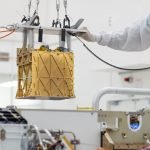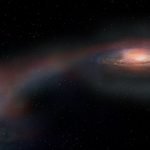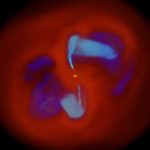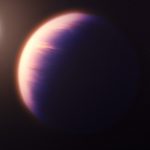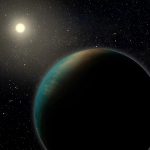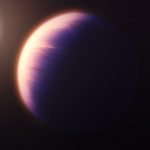Scientists create first full 3D view of binary star-planet system
From above a planet about twice the size of Jupiter, this artist's conception shows the star that planet is orbiting and that star's binary...
NASA’s spacecraft reveals Jupiter’s complex colors
NASA’s Juno spacecraft observed the complex colors and structure of Jupiter’s clouds as it completed its 43rd close flyby of the giant planet on...
MIT instrument could produce oxygen on Mars reliably
On the red and dusty surface of Mars, nearly 100 million miles from Earth, an instrument the size of a lunchbox is proving it...
Scientists detect deadly star-slinging tug-of-war between merging galaxies
While observing a newly-dormant galaxy using the Atacama Large Millimeter/submillimeter Array (ALMA) and the Hubble Space Telescope (HST), scientists discovered that it had stopped...
X-shaped radio galaxies might form more simply than expected
When astronomers use radio telescopes to gaze into the night sky, they typically see elliptical-shaped galaxies, with twin jets blasting from either side of...
Scientists find carbon dioxide in an exoplanet atmosphere
For the first time, astronomers have found unambiguous evidence of carbon dioxide in the atmosphere of an exoplanet (a planet outside our solar system).
The...
Astronomers find a water world planet with deep oceans in the habitable zone
In the search for extrasolar planets, astronomers and astrobiologists generally pursue a policy of “follow the water.”
This comes down to searching for planets that...
Why are people freaking out about the sound of a black hole?
“In space no one can hear you scream,” the famous tagline from outer space horror classic “Alien,” might not be true based on a...
When Mars may have had water
Scientists on NASA’s Perseverance mission made a surprising discovery about the composition of rock in Jezero Crater, one that will help them get a...
Scientists detect carbon dioxide in exoplanet atmosphere
Due to its role in regulating the climate, carbon dioxide is a central component of the Earth's atmosphere.
Being able to clearly detect the molecule...



